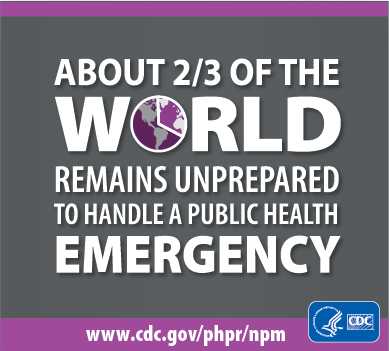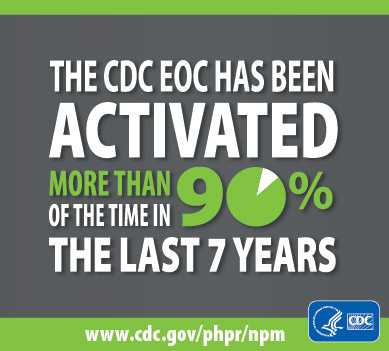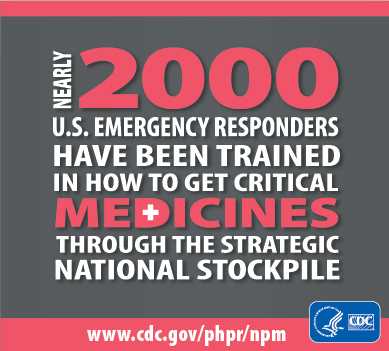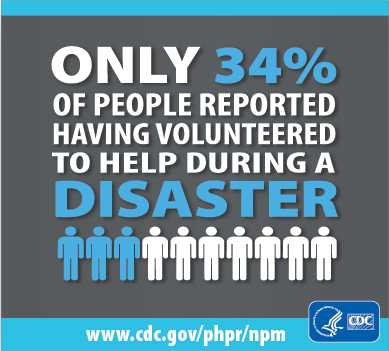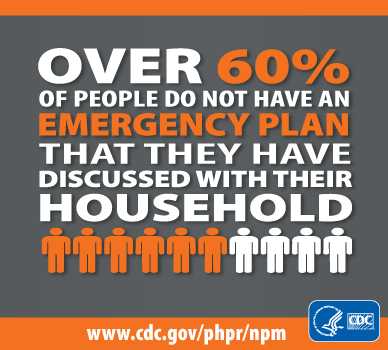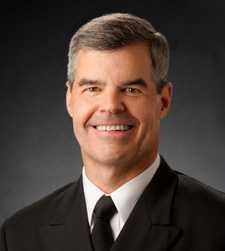National Preparedness Month 2016: The Power of Preparedness
Being prepared at all levels saves lives. Public health emergencies might take the shape of an emerging or rapidly spreading disease, a natural disaster, or an act of bioterrorism. While we can’t always anticipate what the next threat will be or where it will begin, National Preparedness Month presents an opportunity to share how we can all act now to reduce the impact of the unknown.
CDC has joined more than 3,000 global, national, regional, and local government organizations, as well as private and public institutions, to promote the importance of being ready for emergencies. For Preparedness Month 2016, CDC will focus on the power of preparedness globally and locally, and actions that can be taken collectively and individually.
- Prepare globally. Diseases know no borders, which is why countries need to work together to stop epidemics quickly and close to the source.
- Prepare to respond. A cornerstone of response, emergency operations centers are where highly trained experts monitor information, prepare for known (and unknown) public health events, and gather to exchange information and make decisions in an emergency.
- Prepare locally. Every response is local, and state and local health departments are first responders for public health emergencies.
- Prepare together. Communities need to work together to help each other, including protecting those with unique needs like children in schools and people with disabilities.
- Prepare yourself. Individuals can take action now by having a family reunification plan and an emergency kit with basic supplies, medicines, and local emergency phone numbers.
Also in September, all federal agencies will come together to promote the fall PrepareAthon. The PrepareAthon is a nationwide, community-based campaign for action to increase emergency preparedness and resilience through hazard-specific drills, group discussions, and national level exercises conducted each fall and spring. For more information, visit www.ready.gov/prepare.
If you would like to partner with us for Preparedness Month, or would like more information, please visit our website or contact us at phprcommunications@cdc.gov.
Contact Information
CDC Media Relations
(404) 639-3286
media@cdc.gov
Spokespersons
Dr. Stephen Redd, RADM, MD
“When an emergency hits, having trained people who know what to do, and having the resources in place to allow them to do their jobs, can save countless lives. Planning ahead and being ready is the most critical thing we can do to keep people safe from health threats.”
Dr. Stephen Redd, RADM, MD – Director of CDC’s Office of Public Health Preparedness and Response
Related Links
- Office of Public Health Preparedness and Response
- MMWR: National Preparedness Month – September 2016
- MMWR: School District Crisis Preparedness, Response, and Recovery Plans — United States, 2012
- National Center for Environmental Health: Emergency Preparedness and Response
- Blog: National Preparedness Month – Radiation Emergencies
- Disability and Health: Emergency Preparedness
- Health Studies Branch: Preparedness and Response for Public Health Disasters
- Infographic: The Power of Preparedness
- Emergency Operations Center 101
- Page last reviewed: September 26, 2016
- Page last updated: September 26, 2016
- Content source:



 ShareCompartir
ShareCompartir
